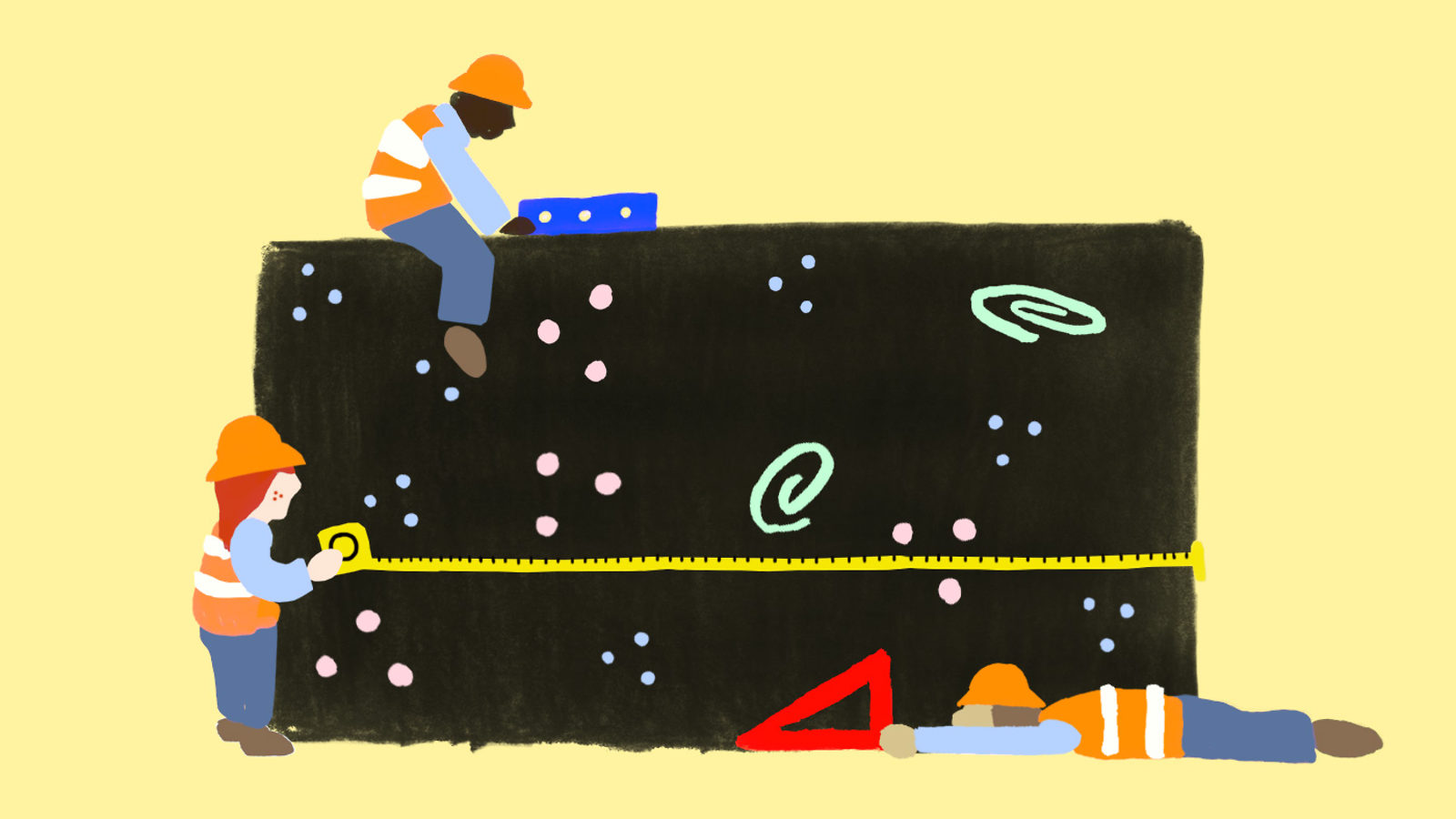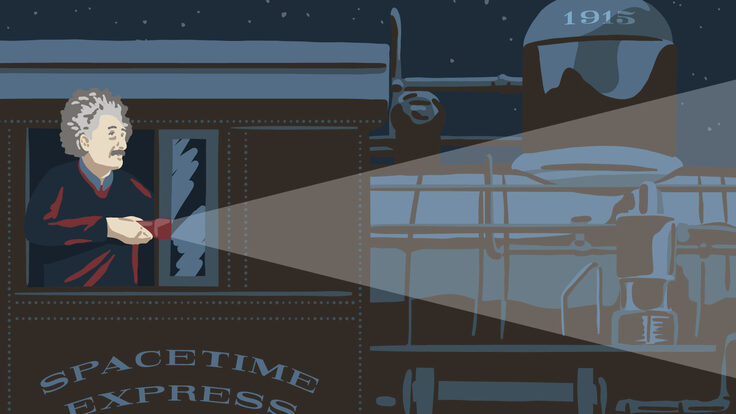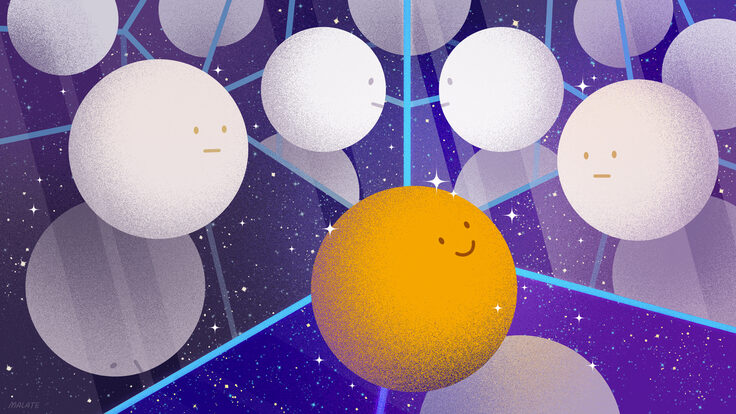Mathematicians, scientists, philosophers and curious minds alike have guessed at the shape of our universe. There are three main options to choose from, in case you’d like to do some digging of your own:
The universe could be positively curved, like a sphere.
The universe could be negatively curved, like a saddle.
The universe could be flat, like a sheet of paper.
As far as scientists can tell, this third option is correct. But what do people really mean when they talk about “flatness”? Your high school math teacher would be overjoyed to tell you that it’s all about geometry.
In a flat universe, Euclidean geometry applies at the very largest scales. This means parallel lines will never meet, and the internal angles of a triangle always add up to exactly 180 degrees—just like you’re used to.
But in curved universes, whether finite or infinite, things get weird. In a positively curved universe, space bulges, skewing parallel lines toward a single point and inflating the sum of angles in a triangle to more than 180 degrees. In a negatively curved space, parallel lines diverge forever and triangle angles get pinched, so the sum is less than 180.
Armed with this knowledge, how do scientists know the universe is flat? The answer is written in the sky, etched on the background radiation streaking at us from every direction. This so-called cosmic microwave background is a snapshot of our universe at one of its earliest moments, when photons (packets of light) were freed from a hot plasma soup produced in the big bang. Scientists also study the structure of galaxies over large scales to test their conclusions.
“The cosmic microwave background in combination with the distribution of galaxies really nails down the flatness,” says Josh Frieman, a physicist at the Fermilab Center for Particle Astrophysics. But, he adds, “the CMB is the linchpin.”
The techniques use similar approaches: Scientists compare the apparent size of features (ripples in the CMB or galactic clumps) with how big they actually are. Any difference indicates distortion caused by the curvature of space. A variety of experiments—including the game-changing Wilkinson Microwave Anisotropy Probe, launched in 2001, and the more recent Planck surveyor—have lent support to the idea of a flat universe.
“Back when we first started with WMAP, we didn’t know the geometry at all,” says David Spergel, a theoretical astrophysicist at Princeton University who worked on WMAP. “Now we’re doing sub-percent measurements.”
There’s also potential to improve the measurement of flatness with current and upcoming experiments including the Atacama Cosmology Telescope, Dark Energy Survey, Large Synoptic Survey Telescope, Polar Bear Telescope, South Pole Telescope and Square Kilometer Array. Researchers on these projects have different aims, and measuring the curvature of the universe is often just a byproduct of the main scientific goal. But it’s an important one.
Besides being a fundamental feature of the universe, curvature helps constrain other measurements, such as the influence of dark energy, the mysterious force driving the accelerating expansion of our universe. It also affects the model scientists have of an inflationary universe. That model predicts the flatness we see today. If more precise measurements showed a departure from flatness, they would indicate that theories about the early universe need to be tweaked.
“There aren’t many handles on what happened at 10-35 seconds after the big bang, but curvature is one of them,” Frieman says.
The shape of the universe is a clue to its origin and may hold a key to its fate. The shape and density of matter in the universe and the strength of dark energy ultimately decide whether the universe will contract back together in a big crunch or spread out and suffer a heat death.
On the largest of all scales, it is still possible that the universe is curved, beyond the edge of our perception. Much like standing in the middle of the Great Plains might lead you to believe the Earth is flat, our understanding of the universe might be limited by our vantage point and the horizon of our visible universe. There’s a chance that the universe is a sphere, or a donut, or a saddle, or a dodecahedron, or some kind of twisted manifold. But if it is, Spergel says, it’s several times larger than our observable universe.
“All we really know is the universe is close to flat and it’s large,” he says. “Very large.”














